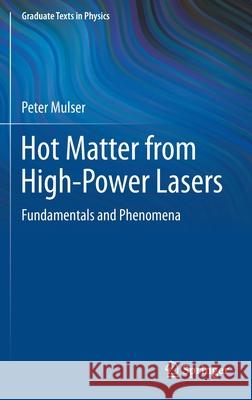Hot Matter from High-Power Lasers: Fundamentals and Phenomena » książka
topmenu
Hot Matter from High-Power Lasers: Fundamentals and Phenomena
ISBN-13: 9783662611791 / Angielski / Twarda / 2020 / 735 str.
Kategorie BISAC:
Wydawca:
Springer
Seria wydawnicza:
Język:
Angielski
ISBN-13:
9783662611791
Rok wydania:
2020
Wydanie:
2020
Numer serii:
000394232
Ilość stron:
735
Waga:
1.21 kg
Wymiary:
23.39 x 15.6 x 3.96
Oprawa:
Twarda
Wolumenów:
01
Dodatkowe informacje:
Wydanie ilustrowane











